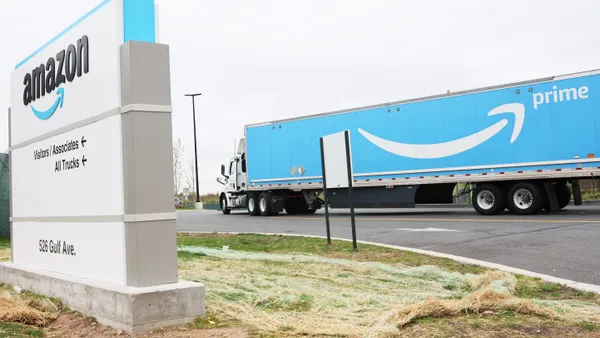Uber announced another 350 layoffs Tuesday, with most eliminated positions from the company’s extra lines of business like autonomous vehicles and Uber Eats, though some came from marketing and global operations.
The latest round is part of work that began in July with 400 layoffs, all from the marketing department, explained CEO Dara Khosrowshahi in an email to staff Monday. The CEO explained the changes are meant to "ensure we have the right people in the right roles in the right locations, and that we’re always holding ourselves accountable to top performance."
Between the July layoffs and this latest round, Uber spoke about Uber Freight at Morgan Stanley’s Laguna Conference. There, the company pledged to onboard roughly 2,000 employees in 2020 for its new headquarters in Chicago. An Uber spokesperson confirmed to Supply Chain Dive that Uber Freight is not affected by the layoffs and those plans are still in place.
With that in mind, and after posting disappointing earnings in the second quarter, Uber Freight may be a rare bright spot in Uber’s portfolio.
This year has been one of growth at the digital freight startup. In April, the platform integrated with SAP Logistics Business Network, adding a legacy software bridge for uninitiated shippers to cross. In August, it launched a desktop app, further inviting integration into larger shipper operations. And last month, it added flatbed to its offering, which Morgan Stanley predicted could put pressure on traditional carriers.
Is Uber Freight a financial feather in Uber’s cap? It’s still hard to say. In financial reports, Uber puts Uber Freight into the category of "Other Bets" along with "mobility" initiatives, such as its dockless scooter business.
The "Other Bets" financial results in Uber's August earnings posted a 175% jump in revenue year-over-year juxtaposed by its $122 million in losses. The division is certainly growing, but the losses may indicate discounts or other customer acquisition expenses. In June, The Wall Street Journal cited Morgan Stanley analysis suggesting the platform was offering below-market pricing in an effort to gain market share. Uber Freight declined to comment on the report.
But by September, Morgan Stanley analysts were singing a different tune, crediting innovation, not aggressive pricing, for what the analysts described as a leader among digital freight entrants.
With the 2,000 new hires, Uber has pledged to spend $200 million per year on Uber Freight.
"We believe this capital injection will continue to fuel Uber Freight’s market share growth and competitive pricing," Morgan Stanley analysts wrote in September. However, they added, "The plan to hire thousands of employees is also interesting given Uber Freight’s ambitions to automate the business in the long term."
Uber's growing team, in light of the shrinkage elsewhere at Uber, is a sign the company sees Freight as a business worth banking on, but the sheer size of the build-out begs the question, will this digital broker end up looking a lot like a traditional broker at scale?















